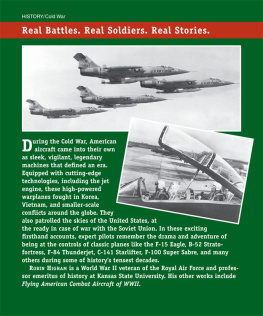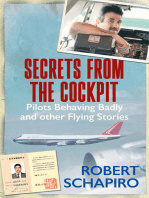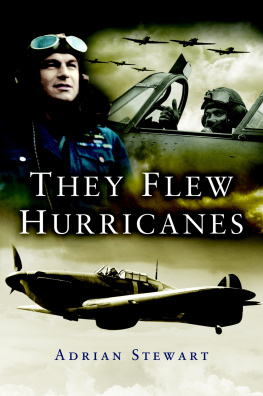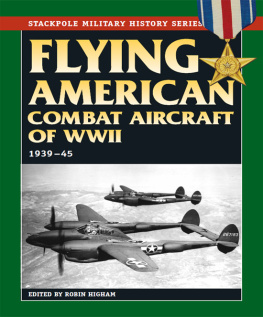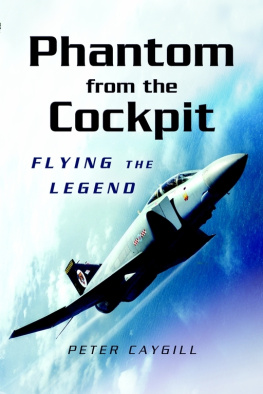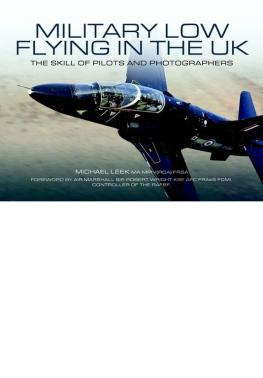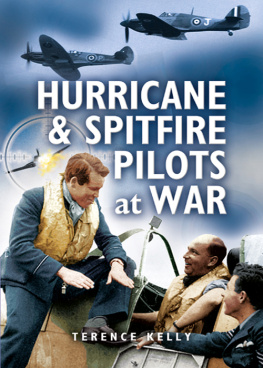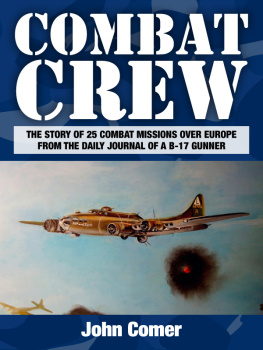Robin Higham - Flying American Combat Aircraft: The Cold War
Here you can read online Robin Higham - Flying American Combat Aircraft: The Cold War full text of the book (entire story) in english for free. Download pdf and epub, get meaning, cover and reviews about this ebook. year: 2005, publisher: Stackpole Books, genre: Romance novel. Description of the work, (preface) as well as reviews are available. Best literature library LitArk.com created for fans of good reading and offers a wide selection of genres:
Romance novel
Science fiction
Adventure
Detective
Science
History
Home and family
Prose
Art
Politics
Computer
Non-fiction
Religion
Business
Children
Humor
Choose a favorite category and find really read worthwhile books. Enjoy immersion in the world of imagination, feel the emotions of the characters or learn something new for yourself, make an fascinating discovery.
- Book:Flying American Combat Aircraft: The Cold War
- Author:
- Publisher:Stackpole Books
- Genre:
- Year:2005
- Rating:4 / 5
- Favourites:Add to favourites
- Your mark:
- 80
- 1
- 2
- 3
- 4
- 5
Flying American Combat Aircraft: The Cold War: summary, description and annotation
We offer to read an annotation, description, summary or preface (depends on what the author of the book "Flying American Combat Aircraft: The Cold War" wrote himself). If you haven't found the necessary information about the book — write in the comments, we will try to find it.
Flying American Combat Aircraft: The Cold War — read online for free the complete book (whole text) full work
Below is the text of the book, divided by pages. System saving the place of the last page read, allows you to conveniently read the book "Flying American Combat Aircraft: The Cold War" online for free, without having to search again every time where you left off. Put a bookmark, and you can go to the page where you finished reading at any time.
Font size:
Interval:
Bookmark:
AMERICAN
BOOKS
Copyright 2005 by Sunflower University Press
Published in 2005 by
STACKPOLE BOOKS
5067 Ritter Road
Mechanicsburg, PA 17055
www.stackpolebooks.com
All rights reserved, including the right to reproduce this book or portions thereof in any form or by any means, electronic or mechanical, including photocopying, recording, or by any information shortage and retrieval system, without permission in writing from the publisher. All inquiries should be addressed to Stackpole Books.
Printed in the United States of America
10 9 8 7 6 5 4 3 2 1
FIRST EDITION
Library of Congress Cataloging-in-Publication Data
Flying American combat aircraft : the Cold War / edited by Robin Higham. 1st ed.
p. cm. (Stackpole Military history series)
This book contains articles selected from the three volumes of Flying combat aircraft of the USAAF-USAF.
Includes index.
ISBN-13: 978-0-8117-3238-3
ISBN-10: 0-8117-3238-X
1. Airplanes, MilitaryUnited StatesHistory20th century. 2. Air pilots, MilitaryUnited StatesBiography. 3. AirplanesHandling characteristicsUnited States. 4. Cold War. I. Higham, Robin D. S. II. Flying combat aircraft of the USAAF-USAF. III. Series.
UG1243.F5 2005
358.4183097309045dc22
2005006976
eBook ISBN: 978-0-8117-5051-6
George W. Hawks, Jr.
Robert E. Vickers
Charles D. Bright
Alton P. H. Brewer, Jr.
Gary L. Stevens
Robert E. Hinnant
James A. Richmond
Robert E. Messerli
Donald E. Jones
Willard S. Ruliffson with Robin Higham
John W. Keeler
Peter M. Dunn
Robert Lee Clark
Roy J. Carrow, Jr.
Joseph L. Vogel
Philip C. Brown
Cecil G. Foster
Jerry Noel Hoblit
Timothy Kline
Earl G. Peck
Garth Blakely
Wayne C. Gatlin
Alexander H. C. Harwick
Russell E. Mohney
William F. Georgi
Cecil B. Jones
John C. Morrissey
Wayne C. Gatlin
Jack Gamble and Patrick K. Gamble.
John L. Zimmerman
L. L. Brabham
In this second volume of Flying American Combat Aircraft, the reader is taken from the pioneer piston-engined era of 1903-1953 into the subsequent jet age, from speeds measured in miles an hour to those indicated by Mach numbers related to the speed of sound.
The transitional period from 1944 when jets first flew on operations to 1965, when the United States Air Force became predominantly a jet force, saw both useful piston-engined machinessuch as the A-1 Skyraider and the C-47 Gooney Birdstill operational, but also hybrids such as the B-36 Peace-maker with both piston-engines and jets.
Pilots had to learn that the jet required more forethought and planning and needed a longer take-off run, but once airborne and cleaned up, its climb was spectacular, its altitude greater, and the distance covered much more than in a piston-engined machine. On the other hand, its fuel consumption at lower altitudes was voracious, and the decision to land had to be more carefully planned, as the options were more limited. On the whole, jets compelled a greater situational awareness.
However, as dog-fighting speeds are relative, the basic principles remained the same although turned circles increased considerably.
Also to be taken into account were the growth and sophistication of electronicsnotably radarand missiles, as well as combat-closing speeds. Decisions have to be automatic or automated and can involve targets literally over the horizon.
Moreover, because of the cost of jet operations, much training is now carried out in simulators on the ground which can replicate almost all flight situations including combat.
As the twentieth century passed, the cost of airframes, engines, and equipment rose dramatically, while speeds and ranges were part of an equation that included economics. One result has been the gradual evolution and improvement of aircraft such as the F-16 so that the newer twenty-first-century models are twice as powerful as the original 1970s version. Another option has been to gut the airframe and then to re-engine it and fit a complete new suite of electronics for navigation, detection, defense, and offense.
Such work means that on the one hand pilots accumulate many more hours on type than they did in piston-engined aircraft, but that they have also continually to be trained up to newer standards not so much to fly the machine, but to be capable of operating it to its fullest.
The transition from piston-engined to jet aircraft can also be seen in the growth of weights and abilities, as well as in labor-saving. For instance, the F-105 of the 1960s traveled at nine times the speed of the B-17, carried three times the bomb load (which it delivered far more accurately), and weighed 10,000 pounds lessbut used only one or two crew versus the World War II heavy bombers crew of thirteen.
The aircraft featured here fought in the Korean War (19501953), the Vietnam War (19621972), the First Gulf War (1991), and the Iraq War (2003)as well as being employed in such lesser conflicts as Afghanistan (2001) and elsewhere around the globe, sometimes vicariously.
The aircraft described here by the pilots who flew them represent the continuity and change of the Cold War half of the twentieth century. Many of them are likely to be operating well into the twenty-first century, when airframes may well become twice as old as the pilots who fly them.
Robin Higham
Manhattan, Kansas
January 2005
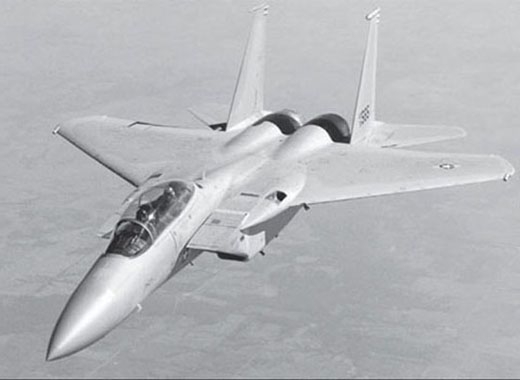
An F-15 in flight.
My first impression of the F-15 Eagle, as it sat on the ramp at Luke AFB, Arizona, was the large size of the fighter. All of my previous fighter experience had been in the F-4, another McDonnell Douglas aircraft, which seemed to be dwarfed by the Eagle. But the F-15 is only 5 feet 6 inches longer and has a wingspan that is 4 feet, 5 inches wider than the F-4C so this impression of large size is far out of proportion to the actual statistics. I attribute this massive appearance to the high mounted wing, the large fuselage required to hold the two Pratt and Whitney F-100 Turbofan engines, the two vertical tails that tower 18 feet, 8 inches above the ground, and the long landing gear upon which the Eagle perches.
The first flights in the F-15, as in any fighter check-out program, are to familiarize the pilot with the handling idiosyncrasies, and to develop a feeling for the aircraft before flying intercept and air-to-air combat rides. Therefore, the first few rides I flew were to learn how to fly the bird. Later, I would learn how to use it effectively.
The first step in any ride is to preflight the aircraft. The walk-around of the F-15 starts at the nose gear and proceeds clockwise around the machine. The inspection is divided into four areas: nose, center fuselage and wing, aft fuselage, and underside of the fuselage. There is quite a difference in the preflight of the F-15 compared to the F-4. Unlike the F-4, there is no need to bend and crawl to check all of the required items, since the F-15 is not a low wing aircraft like the F-4. The F-4 always seemed to leak oil and hydraulic fluid. Invariably, a pilot would emerge from the preflight covered with grease and hydraulic fluid. You dont get as greasy preflighting the F-15. On the walk-around, the aircraft is checked to insure that all panels are secure, tires in good shape, the tail hook is locked full up, no leaks are evident, and the exterior of the airplane appears ready for flight.
Font size:
Interval:
Bookmark:
Similar books «Flying American Combat Aircraft: The Cold War»
Look at similar books to Flying American Combat Aircraft: The Cold War. We have selected literature similar in name and meaning in the hope of providing readers with more options to find new, interesting, not yet read works.
Discussion, reviews of the book Flying American Combat Aircraft: The Cold War and just readers' own opinions. Leave your comments, write what you think about the work, its meaning or the main characters. Specify what exactly you liked and what you didn't like, and why you think so.

